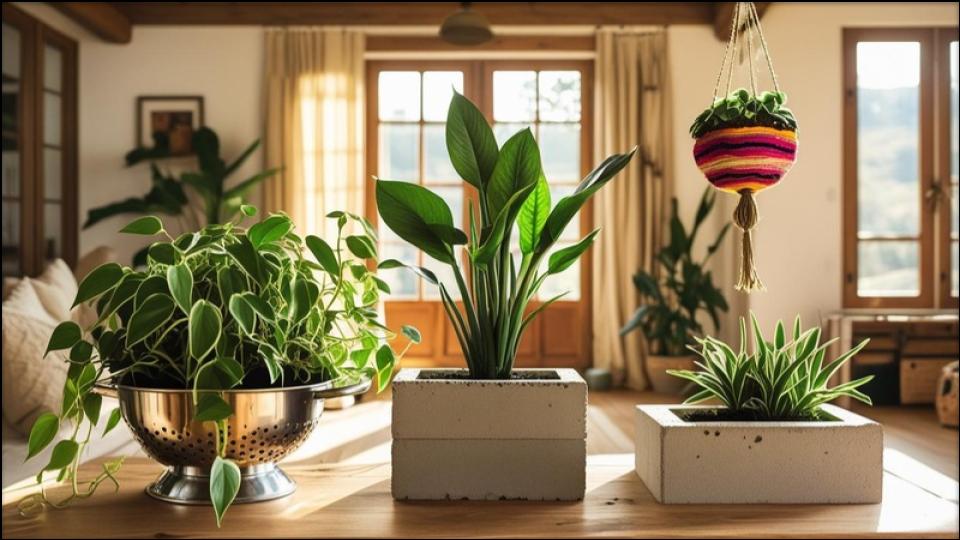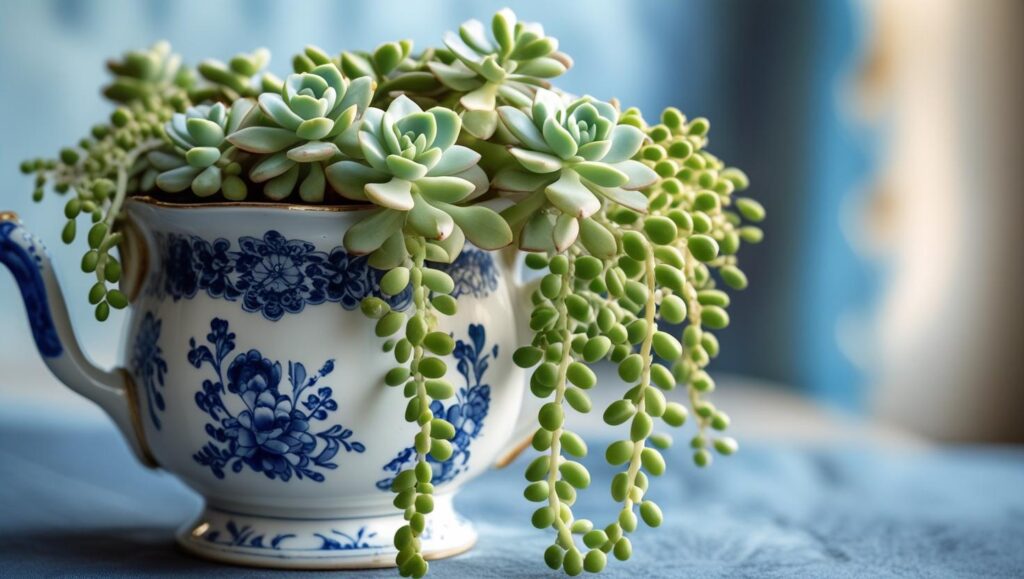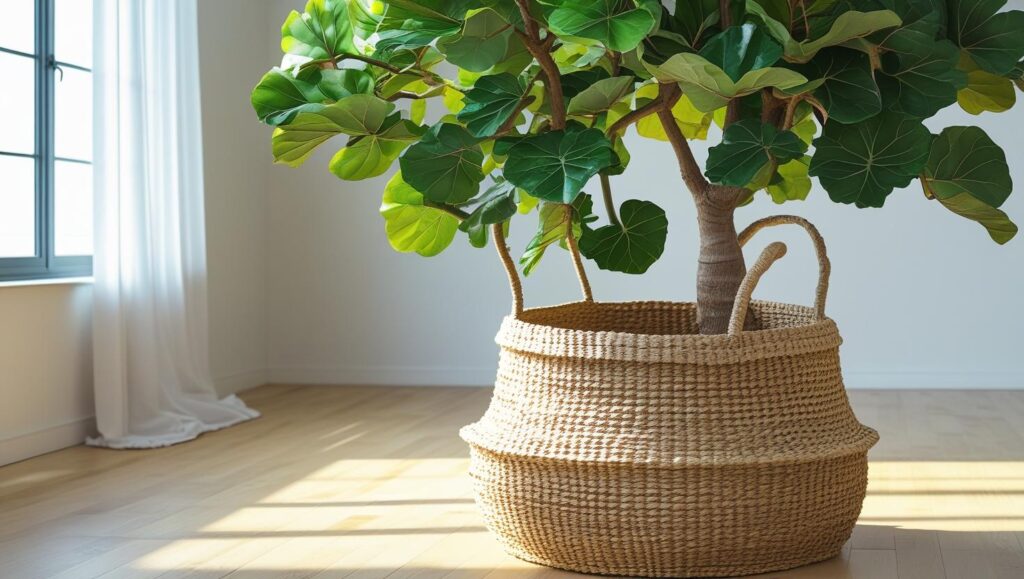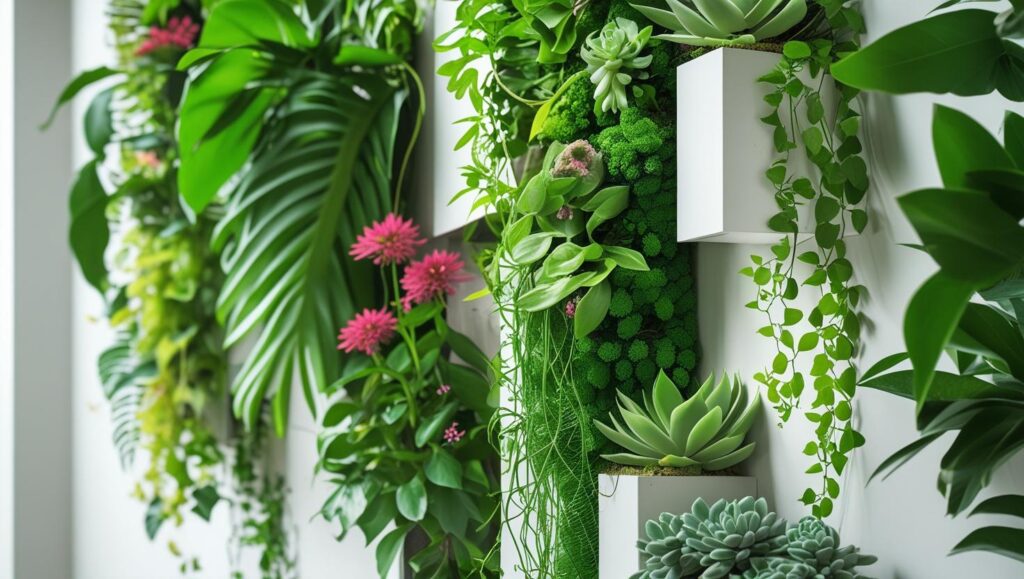A beautiful houseplant is a masterpiece of nature, but the right container. That’s the frame that makes the art truly sing. For too long, we’ve relegated our green companions to standard-issue terracotta or plastic pots, overlooking a world of design possibilities. It’s time to think beyond the basics and explore creative indoor planter ideas that infuse your space with personality, style, and a touch of the unexpected.

This guide will walk you through six inventive approaches to displaying your indoor garden. We’ll explore how to repurpose everyday objects, embrace new techniques, and select the perfect plant for every unique vessel, turning your home into a veritable gallery of green.
Key Takeaways
Here are the essentials for elevating your indoor plant style:
- Prioritize Drainage: No matter how beautiful the container, your plant’s health comes first. Always ensure there’s a way for excess water to escape, either through drainage holes or by using a pot-in-pot method.
- Repurpose with Purpose: Vintage tins, old baskets, and even architectural salvage can become stunning and unique plant containers.
- Match Material to Plant: Porous materials like terracotta dry out faster, while non-porous containers like glazed ceramic or plastic retain moisture longer. Choose accordingly based on your plant’s needs.
- Think Vertically: Hanging planters and living walls draw the eye upward, making the most of your space and creating a dramatic green statement.
TOOLS AND MATERIALS BOX
While each project is unique, here are some useful items to have on hand for your planter adventures:
- Power Drill with various bits (including diamond-tipped bits for ceramic or glass)
- Quality Potting Mix formulated for your specific plant type (e.g., succulent mix, orchid bark)
- Cachepots or simple plastic nursery pots that fit inside your decorative containers
- Activated Charcoal & Small Stones (essential for building healthy terrariums)
- Gardening Gloves
- Waterproof Liners or saucers for baskets and other non-waterproof vessels
Your home is an extension of your personality, and how you display your plants is a wonderful part of that expression. By moving beyond conventional pots, you not only give your plants a beautiful home but also create unique focal points that tell a story. Whether you’re drawn to the rustic charm of a vintage basket, the clean lines of an architectural block, or the delicate magic of a terrarium, there is a world of creative indoor planter ideas waiting for you. Look around your home, visit a local flea market, and start reimagining the possibilities. Your green friends will thank you for it.
1. The Vintage Vessel: Repurposed Charm
There’s a special kind of soul in objects with a past. Scouring flea markets, antique shops, or even your own cupboards can yield some of the most character-rich and repurposed planters. Think old metal tea tins, enamelware colanders, heirloom soup tureens, or elegant silver goblets.
The All-Important Drainage Solution
The cardinal rule of container gardening is drainage. Without it, water pools at the bottom, leading to root rot. For non-porous items like a ceramic teapot, you have two excellent options. The first is to carefully drill a drainage hole in the bottom using a diamond-tipped drill bit.
The second, and often easier, method is to use it as a cachepot (pronounced “cash-po”). Simply keep your plant in its simple plastic nursery pot and place it inside the decorative vessel. As the University of Connecticut Extension explains, you can remove the inner pot for watering, let it drain completely, and then return it to its stylish home. In my experience, this is the safest way to protect both a cherished heirloom and your plant.

Perfect Plant Pairings
The size and style of the vessel should guide your plant choice. A collection of small succulents or air plants looks delightful in individual teacups. A vintage colander, with its built-in drainage, is a perfect and whimsical home for kitchen herbs. For larger tureens or pitchers, consider a lush, leafy plant like a Calathea or a small fern.
2. Woven Wonders: Baskets & Bags
For a touch of soft, natural texture, nothing beats a woven basket. From seagrass and jute to rattan and cotton rope, baskets bring an effortless, bohemian warmth to any interior. They are a fantastic way to conceal a plain nursery pot and are available in countless sizes, making them perfect for housing everything from a small tabletop plant to a grand Fiddle Leaf Fig.
The Secret to Waterproofing
Because natural fibers are absorbent and will degrade with constant moisture, you should never plant directly into a basket. Always use it as a decorative cachepot. To protect both the basket and your floors, place a plastic saucer or liner in the bottom. Many baskets sold as planters already come with a built-in plastic liner, which is a convenient feature to look for.
Plants that Flourish in Baskets
The visual softness of a basket pairs wonderfully with bold, architectural plants. I love the look of a large Monstera deliciosa or a striking Bird of Paradise (Strelitzia nicolai) in a substantial floor basket. The texture of the weave provides a beautiful counterpoint to the plant’s broad, glossy leaves.

3. The Suspended Garden: Kokedama & Modern Hangers
Taking your plants airborne is one of the best creative indoor planter ideas for adding dimension and freeing up surface space. While macramé has its place, the world of hanging planters has expanded dramatically.
An Introduction to Kokedama
Kokedama, which translates to “moss ball,” is a beautiful form of Japanese garden art. The plant’s root ball is bound in a mix of soil, wrapped in moss, and secured with string. The result is a living, sculptural object that can be placed on a decorative dish or suspended in the air. As the Naples Botanical Garden notes, this practice is derived from bonsai traditions. They are surprisingly simple to make and create a stunning visual when hung in clusters at varying heights.
What to Hang
Trailing plants are the obvious choice for suspended gardens. Classic options like Golden Pothos (Epipremnum aureum) and Heartleaf Philodendron (Philodendron hederaceum) are foolproof. For something a bit different, I recommend trying a Hoya for its waxy leaves and fragrant blooms, or a Rhipsalis (Mistletoe Cactus) for its fascinating, string-like foliage.
4. The Glass Menagerie: Terrariums & Wardian Cases
Creating a garden under glass is like capturing a miniature world. Terrariums are not just unique plant containers; they are tiny, self-contained ecosystems that offer a window into the life cycle of plants.
Open vs. Closed Terrariums
According to Mississippi State University Extension, the key distinction is the container’s opening.
- Closed Terrariums: These sealed environments create their own water cycle. Moisture evaporates from the plants and soil, condenses on the glass, and “rains” back down. They are perfect for humidity-loving tropical plants like miniature ferns, mosses, and Nerve Plants (Fittonia).
- Open Terrariums: These are essentially decorative glass bowls or vases without a lid. The lack of a seal means they don’t retain humidity, making them ideal for arid plants like succulents and cacti that would rot in a closed, moist environment.
A common mistake I see is people planting succulents in closed terrariums—it’s a recipe for failure. Always match the plant type to the terrarium style.
5. Architectural Elements: Industrial Chic
For a bold, modern statement, look no further than your local hardware store or architectural salvage yard. Simple, utilitarian objects can be transformed into incredibly stylish DIY indoor planters. Think about cinder blocks, concrete flue tiles, or even large metal ducting elbows.
Creating a Modern Display
A single concrete block, with its central void, makes a perfect, edgy home for a structural plant like a Snake Plant (Dracaena trifasciata). You can also stack several blocks to create a modular, industrial-style plant shelf. The raw, grey texture of the concrete provides a dramatic contrast to vibrant green foliage. When using these materials, the cachepot method is your best friend; simply slip a standard nursery pot inside the opening.
6. The Living Wall: A Vertical Tapestry
Why limit your garden to tabletops and floors? A living wall, or vertical garden, turns an entire surface into a lush tapestry of foliage. It’s a breathtaking feature that maximizes greenery in even the smallest of spaces.
Choosing a System
There are many systems available, from felt pocket planters that you hang on the wall to sophisticated modular panels with built-in irrigation. For a DIY approach, you can mount a series of wall-mounted ring brackets and place individual pots within them.

Care and Considerations
A living wall is a commitment. A common pitfall is underestimating the weight and watering needs. Ensure your wall can support the final weight of the system, soil, plants, and water. Drip irrigation can automate watering, but manual watering requires care to ensure each plant gets a drink without flooding the ones below. My go-to plants for a living wall are a mix of Pothos, Philodendrons, and Spider Plants, as they are forgiving and create a wonderful cascade of textures and green hues.
Read More
New Martha Stewart hybrid tea roses, Blending Celebrity Influence with Horticultural Tradition
